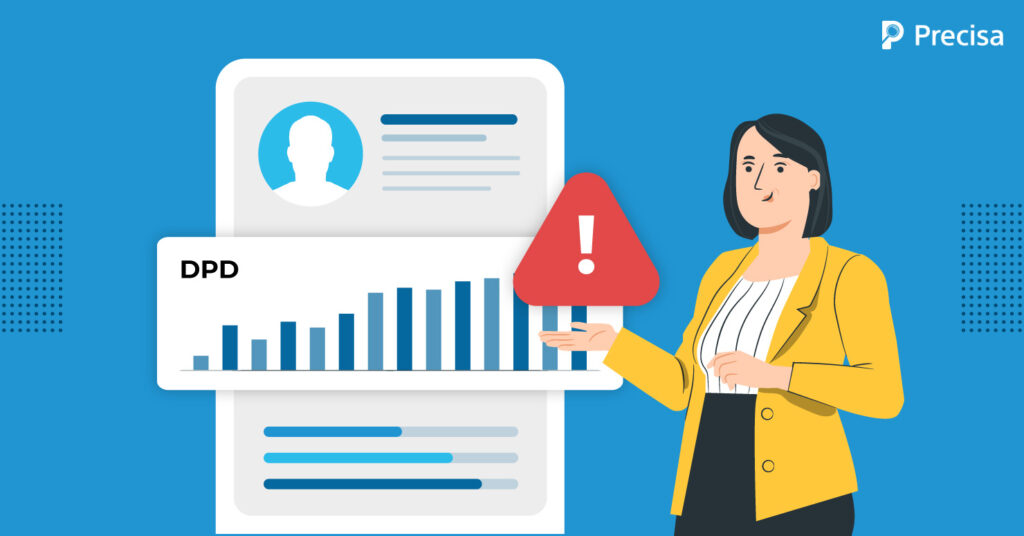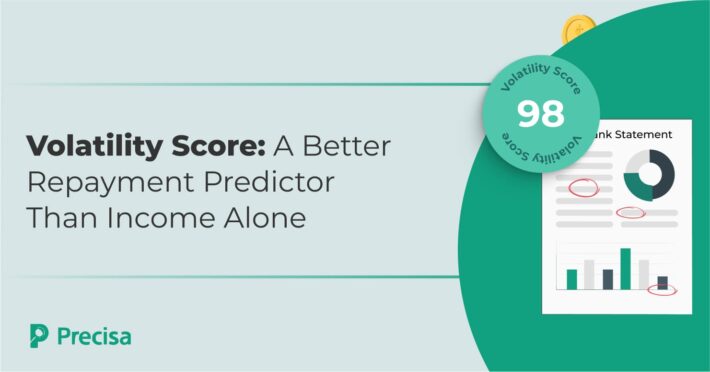Calculating DPD in Finance: A Comprehensive Guide

As India’s lending ecosystem becomes increasingly digital and data-driven, monitoring borrower behaviour has never been more critical. With the Reserve Bank of India reporting a moderation in retail credit growth to 16.6% in June 2024—down from 21.3% the previous year—banks and NBFCs are placing greater emphasis on early risk detection and delinquency tracking to protect asset quality.
One of the most reliable metrics for this purpose is Days Past Due (DPD) — a dynamic indicator of how late a borrower is in meeting payment obligations. Far from being a simple arithmetic calculation, calculating DPD in finance plays a pivotal role in credit monitoring, portfolio health assessment, and regulatory compliance.
In this article, we unpack how DPD is calculated, its role in predicting borrower risk, and how fintech tools like Precisa make this process faster, more accurate, and actionable.
Understanding DPD in Finance: Days Past Due
Before delving into the significance of DPD in delinquency analysis, it’s crucial to understand what DPD represents. It is a measure that quantifies the number of days a borrower has exceeded the due date for their payment.
Therefore, DPD serves as a time-based indicator, revealing how promptly or tardily borrowers are meeting their financial obligations.
The Important Role of DPD in Finance When Analysing Delinquency
The DPD metric is crucial in finance for delinquency analysis, measuring the days a borrower is late in payments. Here’s why it’s important:
1. Early Warning System
DPD acts as an early warning system for financial institutions and lenders. By calculating DPD, they can identify the onset of delinquency well before it escalates into a more severe issue. For instance, a borrower with a DPD of 15 days may signal financial distress or temporary difficulties, providing an opportunity for proactive intervention.
2. Assessing Severity
Delinquency is not a one-size-fits-all concept; it has various degrees of severity. To counter this, DPD serves as a severity indicator. The number of days a payment is overdue directly correlates with the severity of the delinquency. Analysing DPD in finance, therefore, allows financial institutions to classify delinquencies into early-stage and late-stage categories. This categorisation is instrumental in determining the appropriate course of action.
3. Portfolio Health
Calculating DPD is essential for assessing the health of a financial institution’s loan portfolio. A high average DPD across the portfolio may indicate systemic issues with lending practices or economic conditions. A detailed analysis of this data enables institutions to identify problematic portfolio segments and take corrective measures.
4. Predictive Analytics
Incorporating DPD data into predictive analytics models enhances the accuracy of forecasting delinquency rates and potential defaults. By analysing historical DPD patterns, financial analysts can identify trends, correlations, and risk factors that contribute to delinquency. Predictive models can then help anticipate delinquency and allocate resources effectively.
The Process of Calculating DPD in Finance
Evidently, calculating DPD is vital for payment timeliness assessment and delinquency management in finance. Here’s how it measures the days a borrower exceeds the payment due date:
1. Determine the Due Date
The first step in calculating DPD is to identify the due date for the payment. The due date is the date specified in the loan agreement, credit card statement, or any other financial contract as the deadline for making a payment.
2. Record the Payment Date
Once you have identified the due date, the next step is to record the actual payment date. This is the date on which the borrower makes the payment.
3. Calculate the DPD
To calculate the DPD, subtract the due date from the payment date. The result will be the number of days the payment is overdue. The formula is:
DPD = Payment Date – Due Date
For example, if the due date for a payment is the 15th of the month, and the borrower makes the payment on the 20th of the same month, the DPD would be:
DPD = 20 – 15 = 5 days
In this case, the payment is 5 days past due.
4. Categorise DPD
Once you have calculated the DPD, it is often categorised into different buckets or ranges to assess the severity of delinquency.
Common categories include:
- 1-30 days past due: Early-stage delinquency.
- 31-60 days past due: Intermediate-stage delinquency.
- 61-90 days past due: Late-stage delinquency.
- 91+ days past due: Severe delinquency or default.
These categories help lenders and financial institutions gauge the level of risk associated with the borrower’s late payment.
DPD, calculated daily, tracks cumulative days overdue. For borrowers who are repeatedly late, it rises until payment. It’s vital for credit risk assessment, portfolio management, and regulatory compliance.
Automated Bank Statement Analysis Tool for Analysing DPD in Finance?
An automated bank statement analysis tool enhances DPD (Days Past Due) analysis in finance:
1. Efficient Data Processing: Quickly and accurately processes large financial data, aiding DPD calculations.
2. Timely DPD Calculation: Automates DPD calculation for prompt updates on overdue payments.
3. Pattern Recognition: Identifies payment patterns to understand and address delinquencies.
4. Integration with Risk Models: Integrates with risk assessment models for comprehensive creditworthiness assessment.
5. Data Visualisation: Provides visualisations for accessible DPD analysis by financial professionals.
Significance of DPD in Finance in CIBIL Report
A CIBIL report is a financial document that summarises an individual’s or entity’s credit history, including details of loans, credit cards, and payment behaviour used by lenders for credit decisions. Here’s a closer look at the significance of DPD in your CIBIL report:
- Indicator of Credit Discipline: DPD shows how promptly you repay your dues. A consistent record of zero DPD indicates strong repayment behaviour, boosting your creditworthiness.
- Risk Evaluation Tool: Lenders use DPD to assess the probability of default. A higher DPD suggests delayed payments, raising red flags in risk assessments.
- Influences Interest Rates: Borrowers with low or no DPD often receive better loan terms. A strong DPD record can result in lower interest rates and faster approvals.
- Credit Score Impact: DPD significantly affects your credit score. Frequent or prolonged delays lower your score, making it harder to access new credit lines.
- Loan Approval Criteria: Whether it’s a personal loan, home loan, or credit card, DPD is factored into the final lending decision. Even one or two delayed payments can impact approval outcomes.
Wrapping Up!
DPD in finance is crucial for understanding credit risk, loan performance, and compliance. It empowers institutions to make informed decisions and limit losses. In India’s financial landscape, responsible lending and risk management are paramount.
Cutting-edge fintech solutions powered by emerging technologies can help streamline DPD calculations, minimise errors, enable real-time tracking, and revolutionise credit evaluations in today’s digital lending and finance landscape.
Precisa is a cloud-based, automated bank statement analysis tool with features like Precisa Score, irregularities detection, and transactional patterns analysis to calculate DPD in finance.
- Precisa’s timely risk assessments identify defaults, enhancing portfolio management and lending decisions and minimising delinquency for a stable financial system.
- Also, its API integration supports data accessibility and seamless integration with existing systems.
Book a free trial to learn more about Precisa.




